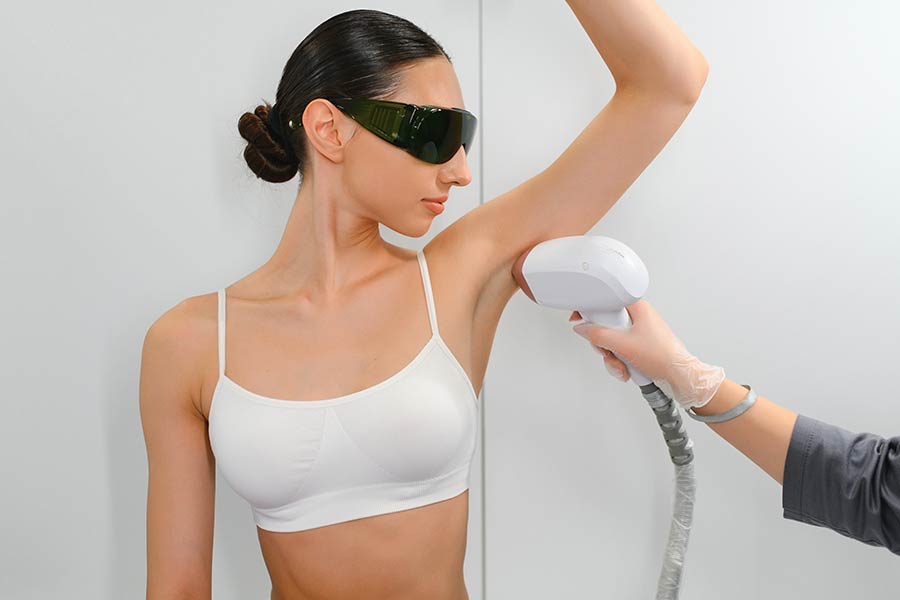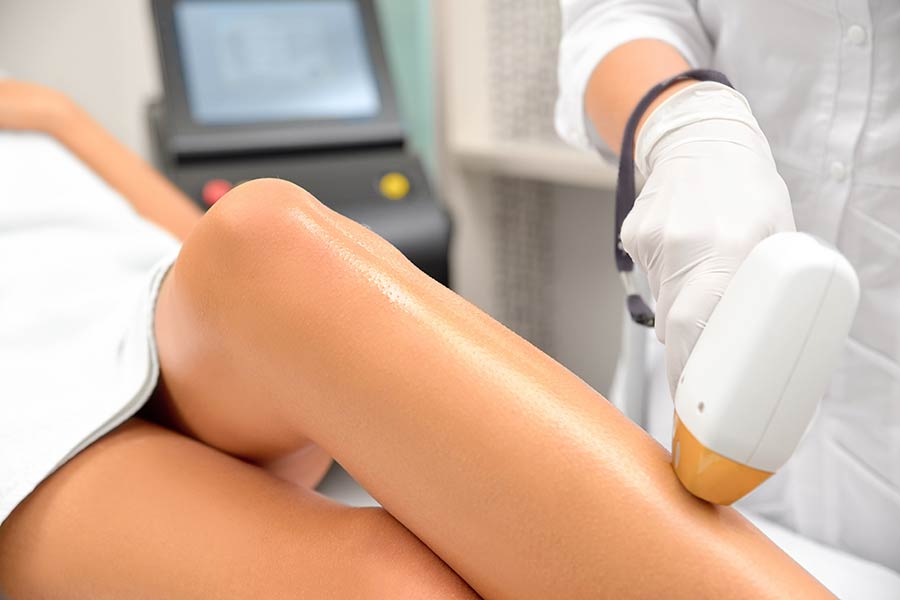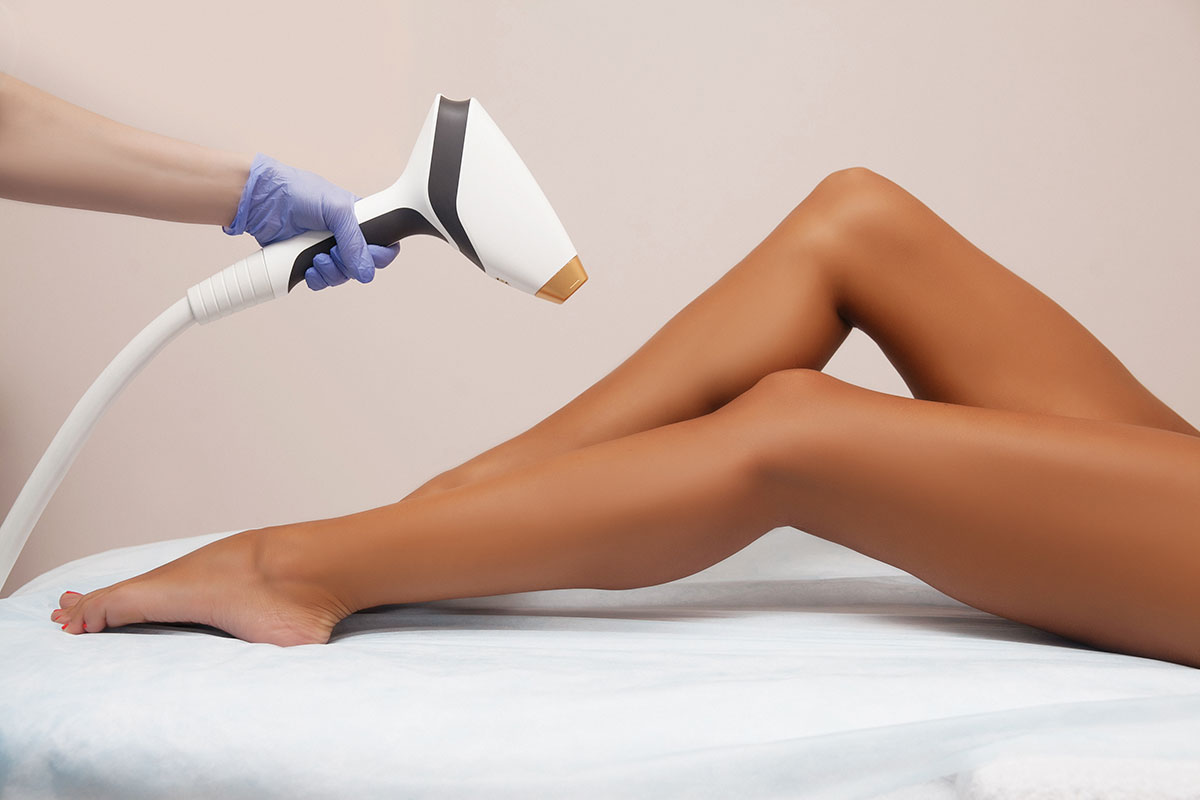Hair removal. It's a pesky routine, isn't it? Shaving, waxing, tweezing - oh, the endless cycle! If you've ever found yourself wishing for a more permanent solution, you're definitely not alone. But, when it comes to options like laser hair removal, concerns about safety might spring up, creating a hurdle between you and your smooth-skin dreams. Sound familiar?
Well, fear not! You've come to the right place to get your questions answered. With advancements in technology and stricter safety standards, laser hair removal has evolved into a reliable, safe, and effective method for long-term hair reduction.
However, it's absolutely normal to have questions. How does it work? Is it safe for all skin types? What about potential side effects? We understand these concerns, and we're here to put your mind at ease. So, let's embark on this enlightening journey together, exploring the fascinating world of laser hair removal and its safety standards. Are you ready to bust those myths and allay your concerns? Let's get started!
Understanding Laser Hair Removal
Let's start with the basics. What exactly is laser hair removal, and how does it work? Well, picture yourself lounging in a garden, soaking up the sun. You feel the warmth because your skin absorbs the sun's rays, right? Now, imagine if we could harness that concept but target it specifically at unwanted hair. That's the genius idea behind laser hair removal!
At its core, laser hair removal involves using a special device that emits a specific wavelength of light. This light is absorbed by the pigments in your hair, transforming into heat. Much like a skilled marksman, the laser targets the hair follicles, disrupting their growth without harming the surrounding skin. Quite nifty, isn't it?
But, you might wonder, how does the laser 'know' where to target? Well, it's all down to the color difference between your hair and your skin. Dark hair absorbs more light, making it a prime target for the laser. This is why laser hair removal is often more effective on people with light skin and dark hair, but we'll get into the specifics later.
Just like that, with a flash of light and a bit of heat, unwanted hair is zapped right at the root. But, remember, it's not an overnight miracle. Consistent sessions are needed to catch each hair in its growth phase. The process might seem akin to a sci-fi movie, but it's the result of years of scientific research and technological advancement.
So, there you have it, a simplified explanation of laser hair removal. Pretty fascinating, don't you think? Now, let's dive into those all-important safety standards. After all, understanding the process is just the first step in our journey to dispel any worries you might have about laser hair removal.
How Lasers Ensure Safety
You may be thinking, "All this talk about lasers and heat, isn't that risky for my skin?" Not to worry. The lasers used in hair removal are not only innovative but incredibly safe. Imagine them as tiny, precise, heat-guided missiles, programmed to target only your hair follicles while leaving the surrounding skin unharmed. Here's how that works.
The real game-changer lies in the laser's wavelength. In laser hair removal, the light emitted is of a particular wavelength that can be absorbed by the pigment (melanin) in your hair but not by the water in your skin. It's akin to tuning into a radio station – the laser is tuned precisely to the 'frequency' of your hair follicles. As a result, the laser's heat is absorbed by the hair, effectively neutralizing the follicle, while the rest of your skin remains blissfully unaffected.
Moreover, most modern laser hair removal machines come with a built-in cooling mechanism. Now, you might be thinking, "Cooling and lasers, together?" Yes, indeed! The cooling device in these machines work simultaneously with the laser, providing a soothing, cooling sensation on your skin. It's like having a tiny air conditioner running alongside the laser, counterbalancing the heat.
These cooling mechanisms not only make the process more comfortable but also protect the skin's surface from any potential heat damage. Picture it like enjoying a summer day under a tree's shade - the tree protects you from the sun's direct heat while you bask in the warmth.
In a nutshell, it's not the wild west when it comes to lasers. They're designed with safety and precision in mind. Like a professional artist, they know where to paint and where to leave untouched. So, while the technology might be complex, the underlying principle is simple: targeted treatment with minimum risk.
Remember, laser hair removal is as much an art as it is a science. The science comes from the precision of lasers, while the art lies in ensuring that this precision doesn't come at the expense of your skin's safety. Now that's some science you can trust!
Professional Training and Accreditation
You've probably heard the phrase, "It's not just the wand, it's the wizard that wields it." This rings true for laser hair removal as well. Even with the best technology at hand, the proficiency of the person using it plays a vital role in ensuring a safe and effective procedure. So, who's the wizard in our analogy? Your laser hair removal practitioner, of course!
When it comes to laser hair removal, it's essential that a trained professional conduct the procedure. Much like you wouldn't let just anyone drive your car, you wouldn't want someone untrained operating a laser on your skin. That's where professional training and accreditation come in.
In the field of aesthetic treatments, professional training and accreditation serve as a guarantee that your practitioner knows what they're doing. Think of it as the seal of approval from relevant medical and professional bodies. These certifications indicate that your practitioner has undergone rigorous training and assessments, and they've proven their knowledge and skill in safely conducting laser hair removal treatments.
In most places, laser hair removal practitioners need to hold a license or certification to operate. They receive extensive training in handling the equipment, understanding skin and hair types, and knowing how to adjust the settings to provide the best results. It's a bit like a pilot knowing how to navigate through turbulent weather - they're equipped with the knowledge to make the right decisions at the right time.
Furthermore, accredited professionals are also trained to anticipate and handle any rare complications that might occur during the procedure. They're like a well-prepared scout - always ready, always alert.
In essence, a qualified practitioner is like a skilled captain at the helm of a well-built ship. With them, you can navigate the sea of laser hair removal confidently, knowing that they're adhering to the highest safety standards. So, always check for professional qualifications and accreditation before going ahead with the procedure. Remember, the more skilled the wizard, the more effectively they can wield the wand!
Importance of Personal Consultation
Imagine you're about to embark on a journey. You wouldn't just hop on a ship without first checking the weather, assessing the sailing route, or knowing the capabilities of your vessel, would you? The same principle applies to laser hair removal – and your consultation is your compass, chart, and weather forecast all rolled into one.
One of the most critical steps to ensure safety and effectiveness in laser hair removal is the personal consultation prior to the procedure. Why, you might ask? Well, much like each person is unique, so is their skin and hair.
Firstly, the consultation gives the practitioner an opportunity to assess your skin and hair type. Not all skin and hair are the same – some are as calm as a summer sea, while others can be as unpredictable as a stormy ocean. Understanding your skin and hair type helps the practitioner determine the most suitable settings on the laser machine for optimal results.
Another crucial factor is your medical history. Like a ship's log that holds important information about its past voyages, your medical history provides valuable insights that can influence the treatment plan. Certain medical conditions or medications might make your skin more sensitive to the laser treatment, requiring special care or, in some cases, an alternative method of hair removal.
A personal consultation also serves as the perfect opportunity to discuss your expectations and any concerns you might have. Think of it as a pre-voyage meeting with your captain – addressing all questions and setting clear expectations ensures a smoother journey towards your destination.
In a nutshell, skipping the consultation phase in laser hair removal is akin to sailing into uncharted waters. It's an essential step to ensure you are a suitable candidate for the procedure, and to tailor the treatment to your specific needs for the safest and most effective results. After all, the more prepared the sailor, the smoother the journey, right? So, never underestimate the power of a good chat – it can steer you towards a successful laser hair removal experience!
Risk Management and Side Effects
Picture this: You're planning a hike up a beautiful mountain. You know that there might be rough patches, slips, maybe even a few scratches. But you also know that with the right gear, careful planning, and a knowledgeable guide, you'll make it to the top, enjoy the breathtaking view, and descend safely. In many ways, understanding the risks and managing the side effects of laser hair removal are akin to preparing for this hike.
The path of laser hair removal, much like any other medical or cosmetic procedure, does come with its potential risks and side effects. However, let's bear in mind that a gentle breeze isn't the same as a tempest. Most of these side effects are minor and temporary when the procedure is carried out correctly and by qualified professionals.
The most common side effects are skin redness and irritation, which are like the soreness and tiredness you'd feel after a long hike. These symptoms usually disappear soon after the procedure, just as your tiredness fades after a good night's sleep.
Slight pigment changes can also occur, particularly for those with darker skin. This is similar to getting a bit of a tan or losing some color after spending a day outdoors. However, these changes are usually temporary and fade over time, and can be minimized by proper care and the use of sun protection.
In rare cases, laser hair removal can lead to blistering, changes in skin texture, or scarring. But remember, these are the exceptions and not the rule. They are more likely if the procedure isn't performed by an experienced professional – a bit like how a hike can become perilous if embarked on without a knowledgeable guide or proper preparation.
To sum it up, just as you would take precautions before and after your mountain hike, the same goes for laser hair removal. With professional guidance, adherence to safety protocols, and a bit of self-care, you can navigate the path of laser hair removal safely and reach your destination - smooth, hair-free skin. Now, isn't that a peak worth reaching?
Following Pre- and Post-Treatment Guidelines
Think of your laser hair removal journey like preparing for a grand party. You wouldn't just turn up unprepared, right? You'd plan your outfit, maybe even pick out some accessories, and possibly follow a skincare routine to get that radiant glow. Similarly, laser hair removal isn't a one-and-done thing; there's a little homework for you to do before and after the procedure to ensure you get the best possible results.
Following pre-treatment guidelines is like sending out your party invitations in advance. They're the necessary first steps to ensure everything goes smoothly on the big day. In the case of laser hair removal, these steps might include shaving the treatment area, avoiding sun exposure, and stopping certain medications or skincare products as advised by your practitioner. Just as you wouldn't wear a heavy coat to a summer party, preparing your skin correctly can make the laser hair removal process smoother and more effective.
Now, the party doesn't end the moment you step out of the venue, right? The same goes for your laser hair removal treatment. Post-treatment care is like arranging a safe ride home after the party - it's an essential part of the process. This may include avoiding hot showers or saunas, steering clear of direct sunlight, and using a recommended moisturizer. Remember, the glow of the party continues with the selfies and memories; similarly, post-treatment care ensures that your skin continues to look its best and recovers quickly.
In essence, just as you'd pay attention to the smallest details when attending a grand party, you should also be diligent about pre- and post-treatment guidelines for laser hair removal. After all, your skin deserves to be treated like the guest of honor, doesn't it? So, follow the professional's advice, take those extra steps, and you're sure to be delighted with the results.
Understanding Rare Complications
Imagine going on an adventure in an enchanted forest. It's mostly a thrilling journey, but there could be thorns along the path or the occasional twisty turn. In the grand scheme of things, these hurdles are minor, but it's still good to be aware of them, right? Similarly, in the journey of laser hair removal, there are some rare complications that you should be aware of, not to be frightened, but to be well-informed and ready.
Most of the time, laser hair removal is a seamless process that grants you freedom from unwanted hair. However, like our enchanted forest, there are a few thorns to keep an eye out for. These might include changes in skin color, especially for those with darker skin, or slight blistering. Extremely rare instances might see some crusting or scarring in the treated area. Sounds a bit scary? Don't worry, let's address these thorns together.
Just as you'd have a trusted guide leading you through the forest, you've got your professional practitioner by your side in this journey. These pros have the training and knowledge to navigate any twists and turns that might arise, ensuring your path to smooth, hair-free skin is as straight and unblemished as possible. They'll make sure the laser's intensity is appropriate for your skin and hair type, decreasing the risk of these complications.
Furthermore, complications are often linked to not adhering to pre- and post-care instructions. Going back to our forest analogy, you wouldn't ignore your guide's advice and wander off the marked path, would you? Similarly, following your practitioner's instructions religiously can keep the risks at bay.
At the end of the day, the goal is to have a safe and enjoyable journey, be it in an enchanted forest or towards a life free of unwanted hair. With professional guidance, adherence to advice, and understanding the potential thorns, your journey towards hair-free skin can truly be a delightful adventure. Remember, the rare complications aren't dragons but mere thorns that, with care and caution, can be managed effectively.
Debunking Common Misconceptions about Safety
Picture this, you've just returned from a glorious adventure through the enchanted forest of laser hair removal. You're brimming with excitement, ready to share your journey, but you're met with a barrage of misconceptions and myths. It's like a pesky cloud trying to block out your newfound sunshine. But fear not! With the torch of truth in hand, let's cut through the fog of misconceptions together.
One of the most common myths is that laser hair removal is extremely painful. To debunk this, consider the analogy of a rubber band being lightly snapped against the skin. That's what many describe the sensation as, and with the use of modern numbing creams, even this minimal discomfort can be further alleviated. See? It's not like wrestling a bear in the forest, is it?
Next up on the mythbuster list is the idea that laser hair removal causes more hair to grow. This is about as believable as a tree growing overnight in our enchanted forest! Laser hair removal works by targeting the pigment in hair follicles, inhibiting their ability to regrow hair, not promoting it.
You might also have heard whispers that laser hair removal is unsafe and can cause skin cancer. However, the truth shines brighter than any misconception. The lasers used in hair removal are non-ionizing, meaning they lack the power to cause cancerous mutations in skin cells. They're like friendly woodland creatures in our forest, not the menacing beasts some make them out to be.
Lastly, some might say that laser hair removal is only for certain skin or hair types. But let's clear the air. Advancements in technology have made it possible to safely and effectively treat a broader range of skin and hair types than ever before. Just as the forest welcomes all adventurers, laser hair removal is becoming increasingly inclusive.
So, remember, don't let myths and misconceptions cloud your journey. Laser hair removal, when performed by trained professionals, is a safe and effective path to the hair-free life you desire. Keep the torch of truth in hand, dispelling the fog, and walk this path with confidence.
Conclusion
As we wrap up our discussion on the safety standards of laser hair removal, let's circle back to our main takeaway - when it comes to this procedure, safety is the name of the game. It's not just about the dazzling promise of smooth, hair-free skin, but about attaining it through safe, reliable means.
Why is this important, you ask? Picture this: Laser hair removal is akin to an intricate dance. The laser sets the rhythm, the dance floor is your skin, and the unwanted hairs are the eliminated dance partners. When performed correctly, it's a harmonious blend of technology and biology, creating results that not only boost your confidence but do so safely and effectively.
But, like every dance, it requires the right choreography – in this case, adherence to safety protocols, use of approved devices, and most importantly, trust in a trained professional who knows the steps.
Keep in mind, on the dance floor, your skin deserves the utmost care and respect. It's imperative to ensure that your chosen clinic prioritizes safety standards, uses FDA-approved devices, and provides customized treatments. Also, remember to be proactive about your post-treatment care - after all, even the dance floor needs some polishing after the dance!
In the end, it all boils down to this: Laser hair removal is a safe, effective, and trusted method for hair reduction. Yet, as with all procedures, understanding the safety standards is your responsibility. After all, knowledge is power, right?
So, before you step onto the dance floor, equip yourself with this knowledge, ask the right questions, and most importantly, ensure your comfort and safety. Because at the end of the day, this is your dance - make sure it's performed on your terms!
There you have it, the safety standards of laser hair removal, wrapped up in a neat little package. Keep this information in your back pocket, and here's to a safe and smooth journey to hair-free skin!












